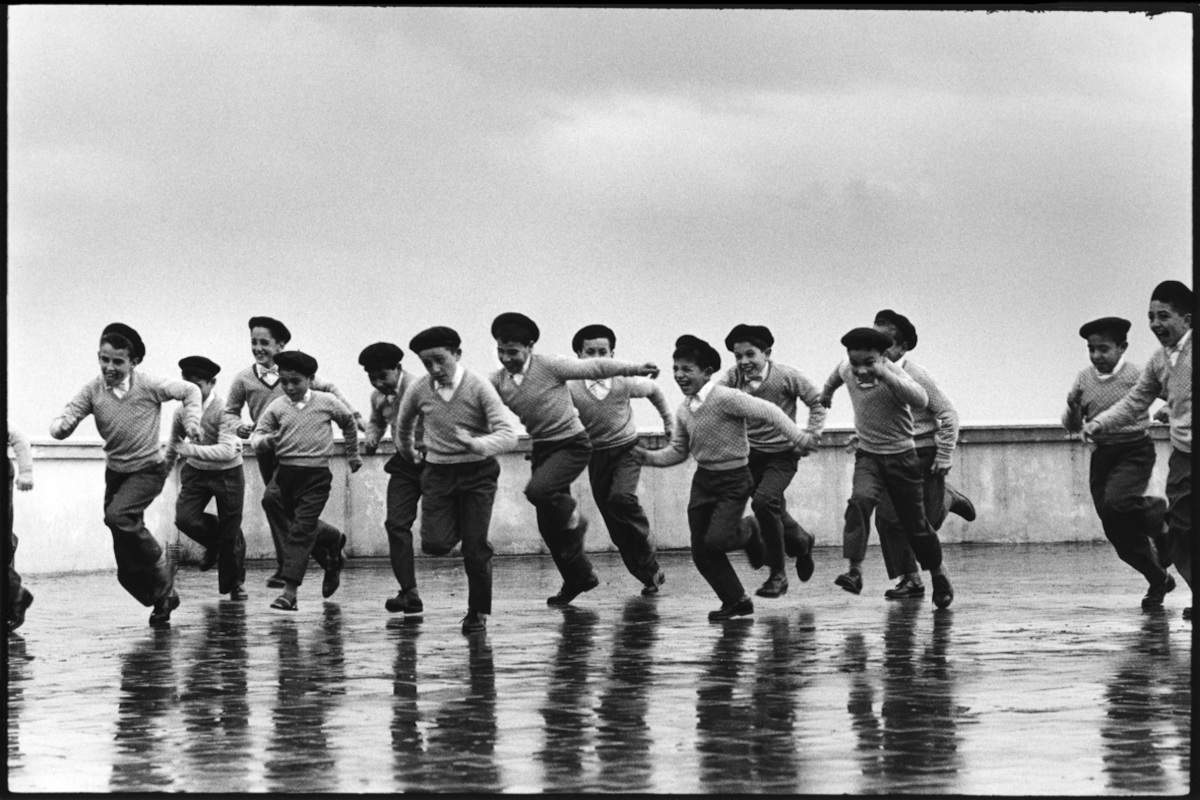Stra (Venice), a major monographic exhibition of Federico Garolla at Villa Pisani. On display are more than 100 of his photographs
From April 24 to October 27, 2024 at the Villa Pisani National Museum in Stra, Venice, the large-scale monograph Gente d’Italia is open to the public. Photographs 1948 - 1968 by Federico Garolla (1925-2012), curated by Uliano Lucas and Tatiana Agliani.
The exhibition brings together more than 100 photographs that offer a complete cross-section of his production, from his reportages dedicated to the world of cinema to his innovative work devoted to the world of Roman tailoring with portraits of Valentino, Capucci, the Fontana Sisters and Schuberth, but also portraits of artists such as Guttuso and De Chirico filmed in their ateliers, musicians from Stravinsky to Rubinstein, and writers such as Elsa Morante and Ungaretti.The villa frescoed by Tiepolo, with its famous labyrinth and park, thus becomes the site of the staging of a cross-section of our society after World War II through Federico Garolla’s sensibility. Years of restarting but still laden with difficulties, such as the difficult everyday life in the villages of the Riviera del fiume Brenta, where ordinary people tried to escape a strenuous survival. That effectively captured by a reportage by Garolla made in 1956 and which, reproduced in large images, populates the Villa’s park inside the space of the stables with memories. “A selection of photographs made by Garolla precisely in the places adjacent to the Villa Pisani complex and that we wanted to exhibit in an installation inside the Park,” stresses Loretta Zega, director of the Villa Pisani National Museum.
Federico Garolla’s goal was to range, with readiness and lucidity, from the glitter of the first fashion shows to the emerging star system to ordinary people. With his unmistakable style, Garolla observes this transformation by capturing modernity, but at the same time also its profound contradictions. These are the 1950s: the golden age of illustrated magazines and the spread of television is still a distant phenomenon. Garolla will become the main witness of the establishment of the great tailors of Roman haute couture, of which he will become one of the protagonists, making a photo shoot a reportage inserted within everyday life.
“Garolla photographs people, the people who are together, reunited and reunited, the people who participate in the collective rituals of fun, of the joy of being survivors. His work is attentive to the facts and delivers to us the soul and essence of it,” stresses Daniele Ferrara, head of the Regional Directorate Musei Veneti of the Ministry of Culture, an institution that, with the Direction of the Villa Pisani Museum in Stra and the collaboration of Suazes and Isabella Garolla, is promoting this major exhibition.
“Garolla belongs to the generation of photojournalism only because, at the time when her talent was expressed, museums, especially in Italy, did not consider photography as an artistic expression,” points out curator Uliano Lucas. “This exhibition aims to help place this important photographer of ours in the right position.”
Federico Garolla was born in Naples in 1925. In 1936 he moved to Eritrea with his family, where he approached the world of journalism and photography, writing in the Asmara Courier. At the end of World War II he returned to Italy, to Naples, where he worked with Il Mattino, Domani d’Italia, and Settimana Incom Carta. In 1950 he moved to Milan where he devoted himself completely to photojournalism: he produced numerous reportages for prestigious newspapers such as L’Europeo, Tempo Illustrato, L’Illustrazione Italiana, Oggi. Sui shots are also published in foreign magazines, such as Paris Match, National Geographic, Colliers, Stern. In 1951 he was a special correspondent for Epoca, and later for Le Ore. From 1953 he documented the birth of Italian high fashion, immortalizing young designers in their ateliers and models on the street for magazines such as Eva, Annabella, Donna, Bellezza, Arianna, Grazia and Amica. In 1956 he moved to Rome where he founded Foto Italia of Agenzia Italia, of which he was the first director. At the same time he witnesses Italian cultural life by immortalizing painters, writers, musicians, film and theater actors. But he also photographs ordinary people and life in the postwar years. In the 1960s he opened the advertising agency Studio GPO and produced campaigns for companies such as Cirio, Locatelli and Spigadoro. He illustrates gastronomy columns and cookbooks published by Longanesi and De Agostini. In 1968 he began his activity in Rai as director and journalist for some TG columns and for a series of documentaries. At the same time he made photographic reportages dedicated to museums, places of architectural and landscape interest, later published by Mondadori, Rizzoli, Domus, and De Agostini. In 1982 with Mario Monti he established a publishing house that prints museum guides drawing on his extensive photographic archive. In the late 1990s he devoted himself to cataloguing and recovering his archive. In the 2000s he closed the publishing house and devoted himself, with his daughter Isabella, to the sole enhancement of his archive.
Image: Federico Garolla, Istituto Don Bosco, Naples, 1959 (from the reportage Infanzia abbandonata) © Federico Garolla Archive
 |
| Stra (Venice), a major monographic exhibition of Federico Garolla at Villa Pisani. On display are more than 100 of his photographs |
Warning: the translation into English of the original Italian article was created using automatic tools. We undertake to review all articles, but we do not guarantee the total absence of inaccuracies in the translation due to the program. You can find the original by clicking on the ITA button. If you find any mistake,please contact us.



























